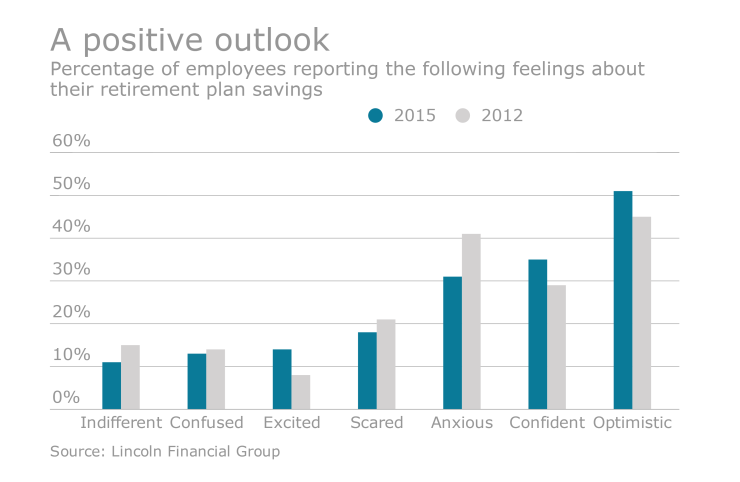Government employees are more likely to participate in a retirement plan than their counterparts in the private sector. The majority of defined contribution plan sponsors in the government sector have participation rates between 75% and 100%, according to research from financial services firm TIAA.
Higher education, private K-12, not-for-profit healthcare and other non-profit segments participation rates aren’t as high, with between 32% and 47% in that top participation range.
The government sector is also doing a good job taking retirement readiness into account, says Derek Heaslip, senior managing director of institutional retirement at TIAA. Government sector plan sponsors are the most likely of all not-for-profit plan sponsors to say that employees should target a 76% to 100% income replacement rate in retirement, 25% vs. 11%-16% for other non-profit segments of the industry.

Fifty-seven percent of retirement plan sponsors in the government sector offer a guaranteed investment option within their DC plan; 45% match 7% or more of an employee’s salary in retirement plan contributions; and 77% offer one-on-one advice services to plan participants.
“While they are doing a lot of things right, and I think they are still, over half of them are concerned their plan employees may not have enough money to retire,” says Heaslip.
“The survey indicated 56% of plan sponsors are still concerned they may delay going into retirement. I think their feelings around retirement readiness have made them aware of the need to structure their plans and to drive engagement in their plans. I think some of those concerns they have around readiness for retirement and when plan participants would be able to go into retirement are driving the behaviors we are seeing there,” he adds.
Despite their concerns about retirement readiness, TIAA’s Not-For-Profit Plan Sponsor Insights Survey found that only 10% of plan sponsors actually track, manage and monitor a participant’s retiree income replacement ratio.
“They are doing a lot of the right things and putting the right tools in place and have the right concerns but they may not be managing it the right way to make sure everyone is getting to the right incomes,” he adds.
He points out that government sector DC plans followed on the heels of defined benefit plans, where the employer made all of the decisions, controlled how much was contributed and invested and were responsible for the guaranteed payout in the end.
The shift to defined contribution, especially in the K-12 and higher education markets, has placed more emphasis on the individual and not the plan or the plan sponsor.
“It is up to the individual to ensure they actually get to the right level of responsibility. It seems like the government market, because of its DB heritage, understands this a bit more than other markets,” Heaslip says.
Plan sponsors in all not-for-profit sectors need to look at their plan’s income replacement options holistically, meaning they need to examine plan contribution rates, how participants are allocating their investments and drill down into different ways to drive higher engagement.
“There needs to be more focus and more collaboration at the employee level. Some of that can be done on-site, but we have digital tools and things we do through either the web or other apps,” he says.
Spreading the message
TIAA’s survey found that plan sponsors believe videos are an effective way to reach plan participants but only 30% actually offer video interaction.
Heaslip mentioned that gamification models are helping drive engagement, especially among women and Generation Y. Contests, quizzes and online games keep employees engaged, while helping them understand various financial concepts.
“Seventy percent of plan participants who went through our game exercise were women; 29% were Gen Y. It is interesting that it is not just men. There are a high percentage of women interested in becoming engaged in financial wellness and are interested in learning more about their plans and what they can do,” he says.
It was the younger generation, between ages 24 and 34, that kept coming back to the games.





